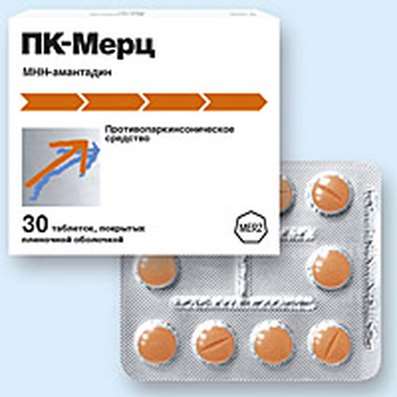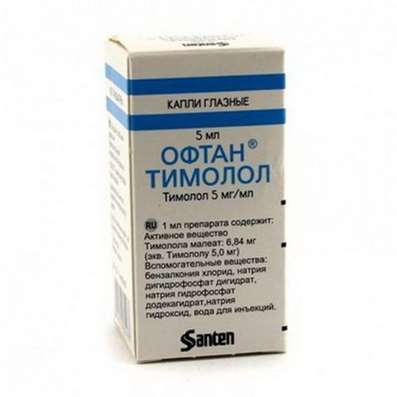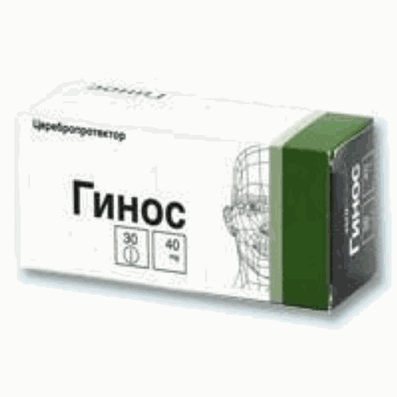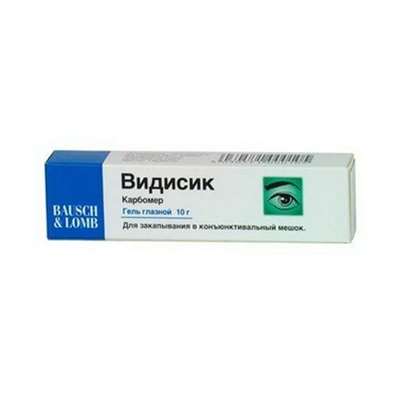Instruction for use: Duellin
I want this, give me price
Dosage form: tablets
Active substance: Levodopa + Carbidopa*
ATX
N04BA02 Levodopa and a decarboxylase inhibitor
Pharmacological groups:
Dopaminomimetics in combination
Antiparkinsonics in combination
The nosological classification (ICD-10)
G20 Parkinson's disease: A trembling paralysis; Idiopathic Parkinsonism; Parkinson's disease; Symptomatic Parkinsonism
G21.2 Secondary Parkinsonism due to Other External Factors
G21.3 Postencephalitic Parkinsonism: Postencephalic Parkinsonism; Postencephalitic Parkinsonism; Postencephalic Parkinson's Syndrome; Parkinsonism postencephalitic
G22 Parkinsonism in diseases classified elsewhere
Composition and release form
Tablets - 1 table.
Carbidopa 10 mg
Levodopa 100 mg
Auxiliary substances: MCC; Hydroxypropyl cellulose; lactose; Methacrylic acid copolymer; talc; Stearic acid; Magnesium stearate; Silica colloidal anhydrous; Indigo carmine
In the blister 10 pcs .; In a box of cardboard 5 blisters.
Tablet mite - 1 tab.
Carbidopa 25 mg
Levodopa 100 mg
Auxiliary substances: MCC; Hydroxypropyl cellulose; lactose; Methacrylic acid copolymer; talc; Stearic acid; Magnesium stearate; Silica colloidal anhydrous; Ariavit quinoline yellow; Ariavit sandet yellow
In the blister 10 pcs .; In a box of cardboard 5 blisters.
Tablets forte - 1 tab.
Carbidopa 25 mg
Levodopa 250 mg
Auxiliary substances: MCC; Hydroxypropyl cellulose; lactose; Methacrylic acid copolymer; talc; Stearic acid; Magnesium stearate; Silica colloidal anhydrous; Indigo carmine
In the blister 10 pcs .; In a box of cardboard 5 blisters.
Description of dosage form
Tablets 10 mg / 100 mg: blue with white and blue impregnations, in the form of a disc, with a facet, with a risk on one side and engraved "E 131" - on the other, odorless.
Tablets 25 mg / 100 mg: yellow, disc-shaped, chamfered, with risk on one side and engraved "E 132" - on the other, odorless.
Tablets 25 mg / 250 mg: light blue with white and blue impregnations, in the form of a disc, with a facet, with a risk on one side and engraved "E 133" - on the other, odorless.
Pharmachologic effect
Mode of action - antiparkinsonian.
Increases the content of dopamine in the body (dopamine is formed from levodopa with the participation of the cytoplasmic enzyme - decarboxylase of aromatic L-amino acids), which inhibits neuronal activity in the striatum of the brain. Carbidopa inhibits the process of decarboxylation of levodopa in peripheral tissues and does not affect the conversion of levodopa into dopamine in the central nervous system. Carbidopa doubles the bioavailability of levodopa, increases the amount of levodopa that enters the brain.
Pharmacokinetics
Levodopa. Absorbed from the gastrointestinal tract by active transport, passage through the BBB is also carried out through active mechanisms. Absorption of levodopa in elderly patients is higher than in young patients. From the stomach, levodopa is absorbed in a limited amount. A key role in absorption is the rate of gastric emptying: factors that inhibit gastric emptying (food, anticholinergic agents), delay the passage into the duodenum and slow the absorption. Cmax is achieved 1-2 hours after ingestion. The volume of distribution is 0.9-1.6 l / kg. Does not bind to blood plasma proteins. Levodopa is decarboxylated with dopa decarboxylase to form dopamine. A large amount of this enzyme is found in the intestine (about 70-75% of the administered levodopa is metabolized in the intestinal wall), endothelium of the capillaries of the brain, liver and kidneys. Methoxylation of levodopa under the influence of catechol-O-methyltransferase to form 3-O-methyldopa is the second pathway of metabolism. An additional pathway of biotransformation is transamination with the formation of vanilly pyruvate, vanilla acetate and 2,4,5-trihydroxyphenylacetic acid. All metabolic pathways, with the exception of transamination, are irreversible. In the course of metabolism, the formation of potentially toxic products is possible, especially with prolonged use. In combination with carbidopa T1 / 2, levodopa is 3 hours. Up to 69% of levodopa is found in urine in the form of dopamine and its metabolites - vanillylmandelic acid, noradrenaline, homovanilic acid, dihydrophenylacetic acid.
Carbidopa. Does not pass through the BBB. Cmax in blood plasma is achieved in 2-4 hours. Approximately 50% is excreted in urine and feces (35% of carbidopa, excreted in urine, is eliminated unchanged).
Indication for the Duellin
Parkinson's disease, Parkinson's syndrome known etiology (due to myocardial encephalitis, cerebrovascular disorders, intoxication by toxic substances, including carbon monoxide or manganese).
Contraindications
Hypersensitivity, angle-closure glaucoma, severe neurosis, psychosis, melanoma (including suspected it), Huntington's disease, essential tremor, skin disease of unknown etiology, pregnancy, breast feeding, age of 18 years.
Application in pregnancy and breastfeeding
Contraindicated in pregnancy. At the time of treatment should stop breastfeeding.
Side effects
From the nervous system and sensory organs: dyskinesia, incl. choreoathetosis, focal dystonia, torticollis, with prolonged use - "on-off" syndrome, vertigo, ataxia, convulsion, anorexia, sedation, drowsiness, nightmares, nervous tension, irritability, restlessness, insomnia, psychotic reactions, hallucinations, depression, Paranoid states, hypomania, euphoria, dementia, blepharospasm, mydriasis, diplopia.
Cardio-vascular system and blood (blood, hemostasis): orthostatic hypotension, collapse, arrhythmia, tachycardia, mild leukopenia, thrombocytopenia, hemolytic anemia.
On the part of the intestine: nausea, vomiting, constipation, pain in the epigastric region, dysphagia, ulcerogenic effect (in predisposed patients).
Other: enhancing libido, a slight increase in body weight (with prolonged use), the change glutamatoksalattransaminazy level glutamatpiruvatoksidazy, alkaline phosphatase, lactate dehydrogenase, urea nitrogen, bilirubin, iodine bound to protein, positive direct Coombs' test.
Interaction
Enhances the activity of sympathomimetics. Incompatible with MAO inhibitors. Simultaneous administration with hypotensive drugs can cause postural hypotension, with tricyclic antidepressants - arterial hypertension and dyskinesia. Phenothiazines and butyrophenones reduce the effect, anticholinergic substances reduce the absorption of levodopa. With the simultaneous use of levodopa with beta-adrenostimulyatorami, means for inhalation anesthesia is likely the development of violations of the heart rhythm, with amantadine - a potentiating effect. Methyldopha and levodopa can potentiate the side effects of each other. Pyridoxine is a cofactor of dopa decarboxylase, an enzyme responsible for the peripheral decarboxylation of levodopa and the formation of dopamine. When he is prescribed to patients receiving levodopa (without inhibitors of dopa-decarboxylase), peripheral metabolism of levodopa is noted and a smaller amount passes through the BBB. Thus, pyridoxine reduces the therapeutic effect of levodopa unless additional inhibitors of peripheral dopa-decarboxylase are additionally prescribed. With the additional appointment of inhibitors of dopa-decarboxylase, the daily dose of levodopa can be reduced by 70-80% while maintaining the same clinical result. When combined with the use of diazepam, phenytoin, clonidine, thioxanthene derivatives, papaverine, reserpine, m-holinoblokatorami possibly lowering antiparkinsonian action.
Dosing and Administration
Inside, not liquid, with a small amount of liquid during or after a meal. The dose is selected individually. The average daily dose of carbidopa, necessary to suppress the peripheral conversion of levodopa, is 70-100 mg. With the appointment of more than 200 mg of carbidopa per day, further enhancement of the therapeutic effect does not occur. In case of mild symptomatology, the initial maintenance dose is 1 tab. (25 mg / 100 mg). It is possible to combine 3 drugs, for example, supplementing a dose of 25 mg / 250 mg with any drug containing 100 mg of levodopa. The daily dose of levodopa is not more than 2000 mg.
Duellin® 10 mg / 100 mg: the initial dose is 1 / 2-1 table. 3 times a day; The dose is gradually increased by 1/2 table. per day. The total daily dose is 10-12 tablets. This drug is recommended in cases when it is necessary to use a minimum of 700 mg of levodopa per day with an improvement in motor activity.
Duellin® 25 mg / 100 mg: usually, with initial replacement therapy, - 1 / 2-1 table. 2-3 times a day; The dose is gradually increased by 1/2 table. per day. In severe disease, the dose is increased by 1 / 2-1 table. Per day, up to 8 tablets.
Duellin® 25 mg / 250 mg: the initial dose is 1/2 table. 2 times a day, if necessary, increase by 1/2 table. per day. As a rule, at the beginning of replacement therapy, the daily dose is no more than 3 tablets. (1 table 3 times a day). Use in this dosage is recommended at the beginning of treatment of severe cases of parkinsonism. The daily dose for monotherapy is no more than 8 tablets. (1 table 8 times a day). The use of the drug in high doses in an amount of more than 6 tablets. A day should be done with great care.
Duellin® when replacing levodopa. If the prescribed dose of levodopa is not more than 1500 mg / day, take 1 table. 3-4 times per day (Duellin® 10 mg / 100 mg or Duellin® 25 mg / 100 mg), more than 1500 mg - 1 table. 3-4 times a day (Duellin® 25 mg / 250 mg).
The use of Duellin® when replacing drugs containing levodopa and other inhibitors of dopa- decarboxylase
Treatment begins no earlier than 12 hours after the last administration of the previous antiparkinsonian drug. The dose of Duellin® largely depends on previous therapy. The amount of levodopa in Duellin® and in the previously prescribed preparation should be the same.
Overdose
Symptoms: arterial hypertension, hypotension (including orthostatic), sinus tachycardia, confusion, agitation, insomnia, anxiety, symptoms of anorexia and insomnia.
Treatment: gastric lavage, the appointment of activated charcoal, symptomatic therapy in a hospital. There is no specific antidote.
Precautionary measures
With caution (under close supervision) administered to patients with erosive and ulcerative lesions of the gastrointestinal tract (stomach and / or duodenum), epileptic seizures a history of myocardial infarction with rhythm disorders history of heart failure, diabetes, asthma, diseases of the endocrine system, Mental disorders, severe impairment of liver or kidney function.
With prolonged treatment, it is necessary to periodically monitor the functions of the liver and kidneys, hematopoietic and cardiovascular systems, and the patient's mental status.
Duellin® should not be used in secondary parkinsonism caused by the use of antipsychotics (neuroleptics).
Discontinue therapy should be gradual (to avoid the development of a symptom complex resembling a malignant neuroleptic syndrome: muscle rigidity, fever, increased serum creatinophosphinase levels). It is necessary to control patients who suddenly needed to reduce the dose of the drug or interrupt its reception.
When general anesthesia is performed during surgical operations, do not reduce the dose, if the patient is able to take drugs and liquid inside. When using halothane and cyclopropane assignment Duellin® stopped at least 8 hours before and after the operation is resumed at the same dose.
Treatment with MAO inhibitors should be discontinued at least 14 days before the appointment of Duellin®. Selective MAO B inhibitor (selegiline) can be used as an adjuvant in the treatment of levodopa.
Since the suction there is competition between aromatic amino acids and levodopa, during treatment to avoid the use of large amounts of proteins.
Side effects can be eliminated by a temporary dose reduction without interruption in treatment. Patients with glaucoma against the background of taking the drug should regularly monitor intraocular pressure. Do not use during work drivers of vehicles and people whose profession is associated with increased concentration of attention.
Storage conditions of the drug Duellin
At a temperature of 15-25 ° C.
Keep out of the reach of children.
Shelf life of the drug Duellin
3 years.
Do not use after the expiry date printed on the package.

 Cart
Cart





